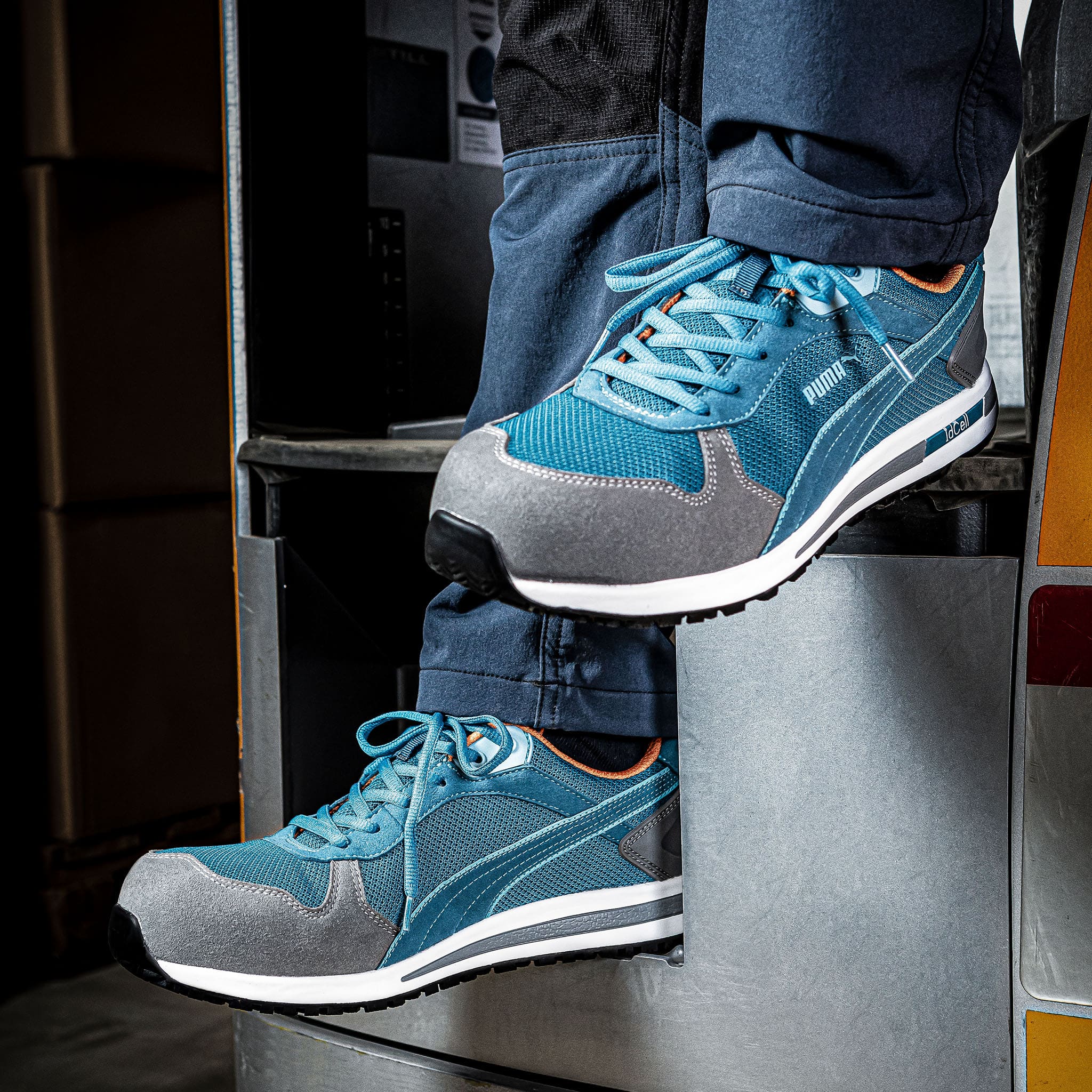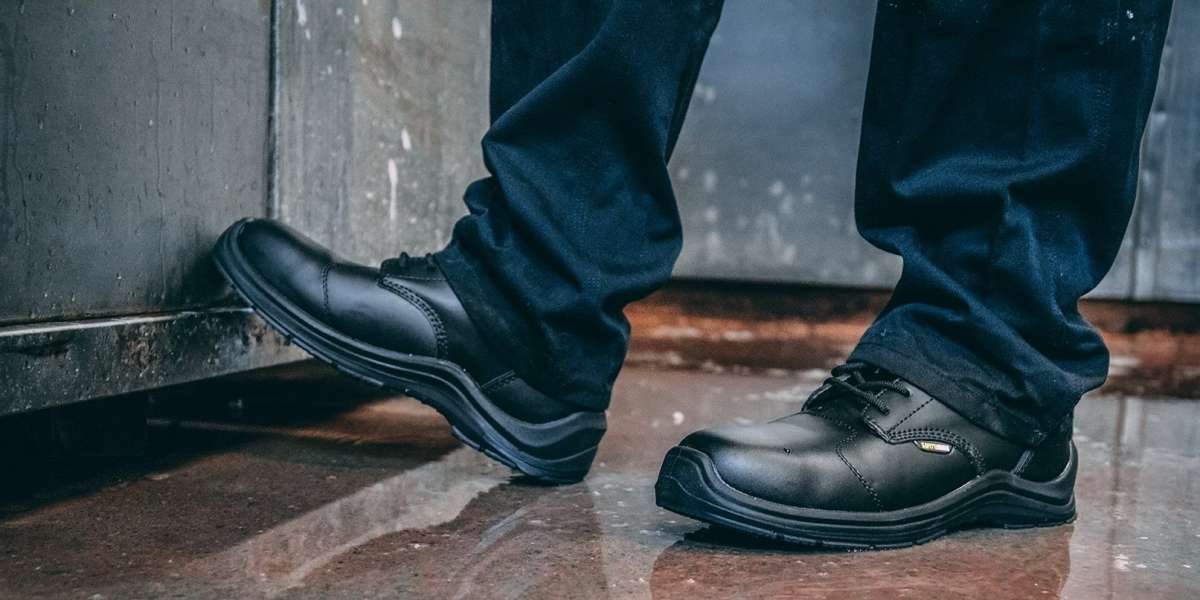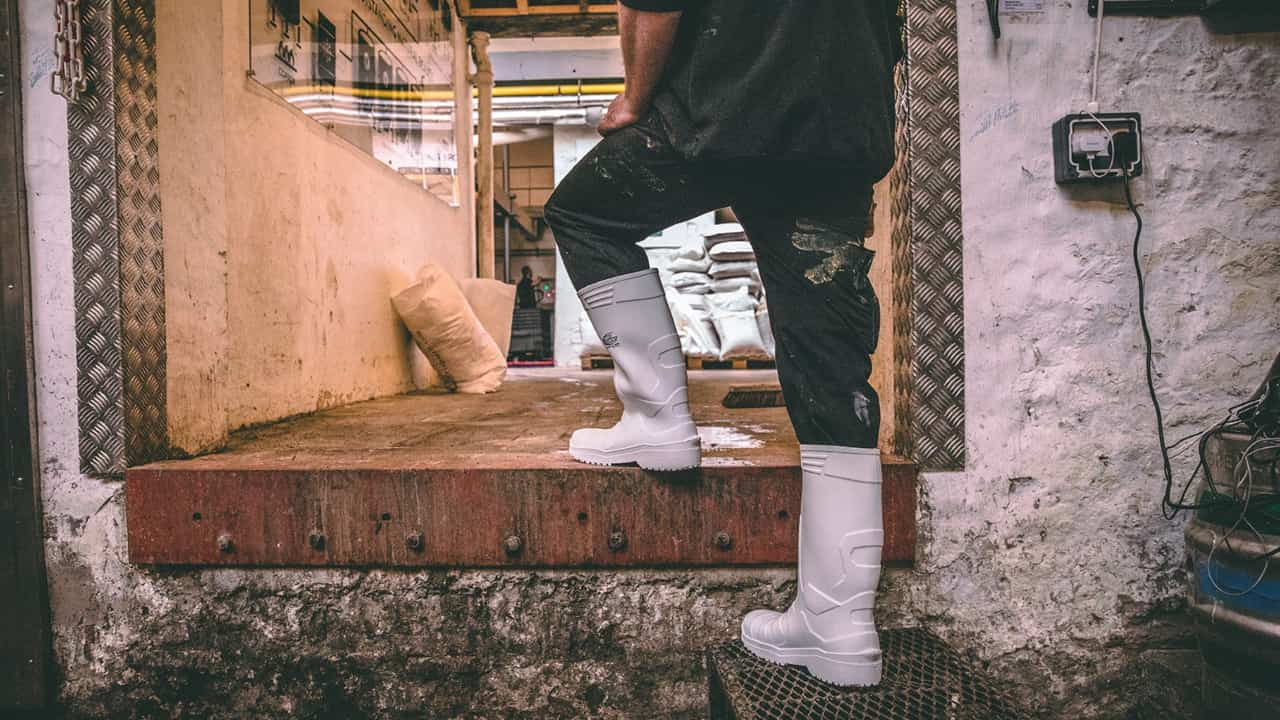A COMPREHENSIVE GUIDE TO THE SAFETY FOOTWEAR CODES
When it comes to buying safety footwear, there are a range of factors to consider including comfort and style, but above all else health and safety is the ultimate priority. Within the UK, there are safety footwear regulations to ensure that the shoes or boots you wear for work are suitable. However, with various safety codes and ratings to understand, finding the right fit can be a challenge.
In this article, we’ll explain the safety footwear codes in more detail and will take a look at the various abbreviations you may find when searching for a new pair of shoes/boots for your job.
-
Safety Footwear PPE Regulations
- What is EN ISO 20345
- Safety Footwear Ratings
- Slip-Resistant Ratings
- Additional Safety Footwear Markings
- Frequently Asked Questions

Safety Footwear PPE Regulations
Safety equipment is crucial to reducing the risks a workforce faces on a daily basis, and there are a number of PPE regulations that ensure suitable equipment is being provided. If you’re required to wear PPE equipment at work, then the chances are this has been determined through use of the Personal protective equipment (PPE) at work regulations 2022.
Once the need for PPE has been identified, that specific piece of equipment will then be subject to its own set of standards to ensure that it’s approved for use. In the case of safety footwear, this falls within the standard EN ISO 20345.
What is EN ISO 20345?
Set by the International Organization for Standardization (ISO), EN ISO 20345 is a standard that outlines the minimum and optional requirements for safety footwear. At its most basic level, footwear that falls within this standard must offer a protective toecap that can withstand a 200-joule impact. However, there are various features, categories and markings within the standard to define what level of protection a piece of footwear offers.
Shoes that fall within EN ISO 20345 standards are typically used within industries that are exposed to mechanical risks such as heavy compression or impact, such as warehousing or logistics.
Safety Footwear Ratings
Within the EN ISO 20345 standards, there are various ratings that are used to determine what level of protection a piece of footwear provides. Within 2011’s version of the standard (EN ISO 20345: 2011), there were nine levels of protection, but this has since been expanded further within a 2022 update (EN ISO 20345: 2022).
SB (Safety Basic) - As the name suggests, SB is the basic safety requirement for footwear and offers users a protective toecap that can withstand a 200-joule impact. SB-rated shoes are suitable for workplaces where toe protection is required, but there is no risk of underfoot damage.
S1 - S1 footwear offers the same features as SB-rated footwear as well as additional protection in the form of a closed heel, antistatic protection and energy absorption in the heel.
S2 - S2 footwear offers the same features as S1-rated footwear as well as additional protection in the form of a waterproof exterior to prevent water penetration.
S3 - S3 footwear offers the same features as S2-rated footwear as well as additional protection in the form of midsole penetration resistance to prevent sharp objects from penetrating the footwear and damaging your foot.
S4 - S4 footwear offers the same features as S1-rated footwear but is made from a rubber upper or entirely-moulded polymer, such as a Wellington boot. This means that S4-rated footwear offers waterproof and leak-proof properties.
S5 - S5 footwear offers the same features as S4-rated footwear as well as additional protection in the form of midsole penetration resistance.
S6 - Introduced within the EN ISO 20345: 2022 standard, S6 footwear offers the same features as S2-rated footwear as well as additional protection in the form of water resistance for the whole piece of footwear.
S7 - Also introduced within the EN ISO 20345: 2022 standard, S7 footwear offers the same features as S3-rated footwear as well as additional protection in the form of water resistance for the whole piece of footwear.

Slip-Resistant Ratings
Slip-resistant footwear plays a crucial role in various workplaces, offering an enhanced level of protection when working on surfaces that may be subject to slip risks. If you’re looking to buy a pair, you’ll want to review the footwear’s slip-resistance rating, in order to work out whether they’re suitable.
Within the EN ISO 20345: 2011 standard there are three ratings:
SRA - SRA-rated footwear has passed a test on a ceramic tile floor that has been saturated with sodium lauryl sulphate (the active ingredient in soap).
SRB - SRB-rated footwear has passed a test on a steel floor that has been saturated with glycerol (a naturally occurring alcohol that feels oily).
SRC - SRC-rated footwear has passed a test under both SRA and SRB conditions.
However, the EN ISO 20345: 2022 standard has introduced some updates to slip-resistant ratings. SRA is now considered a mandatory requirement of safety footwear, while SRB and SRC tests are no longer undertaken. There are some new markings to be aware of that represent an enhanced level of slip-resistance compared to what’s mandatory:
SR - SR-rated footwear has passed a test on a ceramic tile floor that has been saturated with glycerine (a natural compound derived from vegetable oils or animal fats).
Ø - Ø-rated footwear has not been tested according to this standard as it offers studs or spikes, or is for use within special workplaces and is therefore not applicable.
Additional Safety Footwear Markings
When looking at a new pair of work shoes or boots, you may find that there are further markings on top of the footwear’s safety rating. These markings are usually in the form of a letter, informing you of additional safety features on top of what’s required for that safety rating. Additional safety footwear markings for EN ISO 20345: 2022 are as follows:
A - Protects against static electrical charges such as static shocks, but does not offer full protection from exposure to electronics or explosive work.
AN - Ankle protection. When a 10N impact occurs, the transferred force shall not exceed 10KN and no single value shall exceed 15KN.
C - Footwear that’s partially conductive. The electrical resistance between foot and ground will not exceed 0.1 Mega Ohms.
Cl - Offers insulation against cold surfaces. Test conducted at 17 degrees celsius for 30 minutes, with a reduction in temperature of no more than 10 degrees celsius.
CR - Offers a cut-resistant upper.
E - Energy absorption of the seat region to be at least 20J.
FO - Resistant to fuel oil.
Hl - Offers insulation against hot surfaces. Test conducted at 150 degrees celsius for 30 minutes, with an increase in temperature of no more than 22 degrees celsius.
HRO - Resistant to contact with hot surfaces of up to 300 degrees celsius for 60 seconds.
LG - Ladder grip.
M - Metatarsal protection for impacts of up to 100J.
P - Tested with a 4.5mm nail. Offers a metal anti-perforation sole that can withstand at least 1,100 newtons of pressure.
PL - Tested with a 4.5mm nail. Offers a non-metal anti-perforation sole that can withstand at least 1,100 newtons of pressure with no separation of the layers during all tests.
PS - Tested with a 3.0mm nail. Offers a non-metal anti-perforation sole that has an average penetration value of no lower than 1,100 newtons over the course of four tests.
SC - Offers scuff-cap abrasion.
WPA - Offers water penetration and absorption (breathable).
WR - Water-resistant footwear that offers a waterproof membrane.
When reviewing which markings a shoe has, it’s worthwhile double-checking which ISO standard it falls within as the markings may differ slightly depending on which year it falls within.

Frequently Asked Questions
What type of safety footwear is the best for me?
Each job/industry has specific needs or requirements, so we’d recommend reviewing your workplace to work out what features you’ll need. For example, waiting staff may prefer to have additional grip, while supermarket staff may prioritise impact protection to reduce the risks of heavy cages damaging their feet. Once you’ve thought about the risks associated with your workplace, you can use the markings discussed above to find footwear that ticks all your boxes.
What is the difference between ISO 20345 and ISO 20347?
The ISO 20345 standard outlines the minimum and optional requirements for safety footwear, whereas the ISO 20347 standard outlines the minimum and optional requirements for occupational footwear. Occupational footwear has no requirement for certain safety features such as a protective toecap and is typically used where mechanical risks such as impacts and heavy compression, making them popular amongst staff such as receptionists and nurses.
Stay safe at work with the correct footwear
Now that you’re familiar with the various safety footwear ratings and codes you’re better placed to find footwear that’s ready for the challenges of your day-to-day working life.
Our safety footwear collection offers a range of different styles and features to suit various job types and industries.










